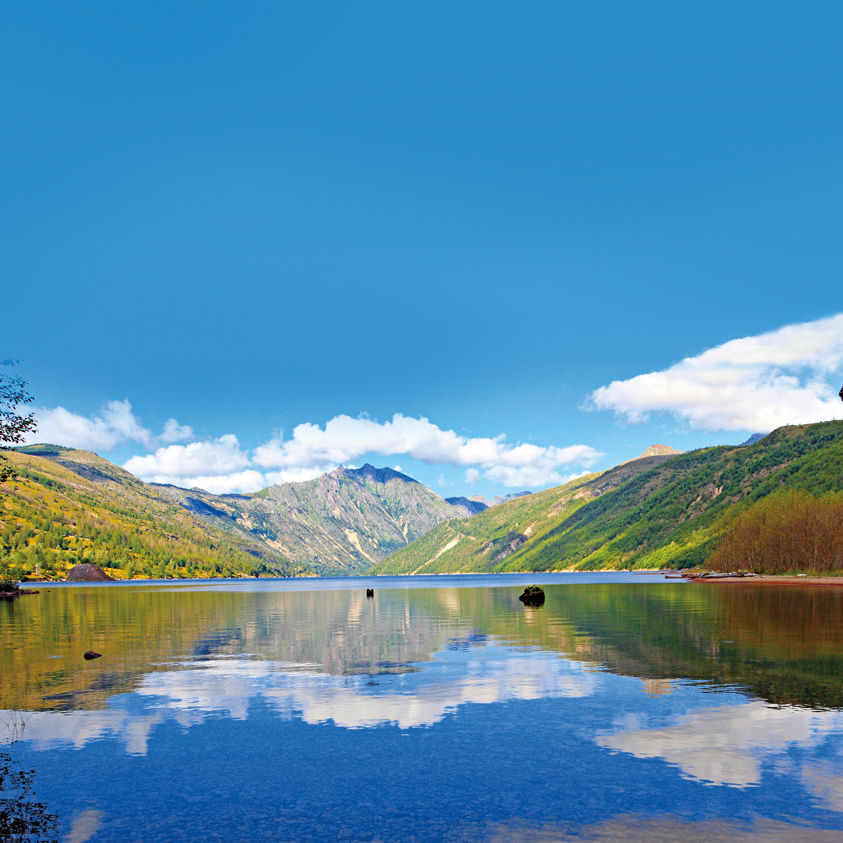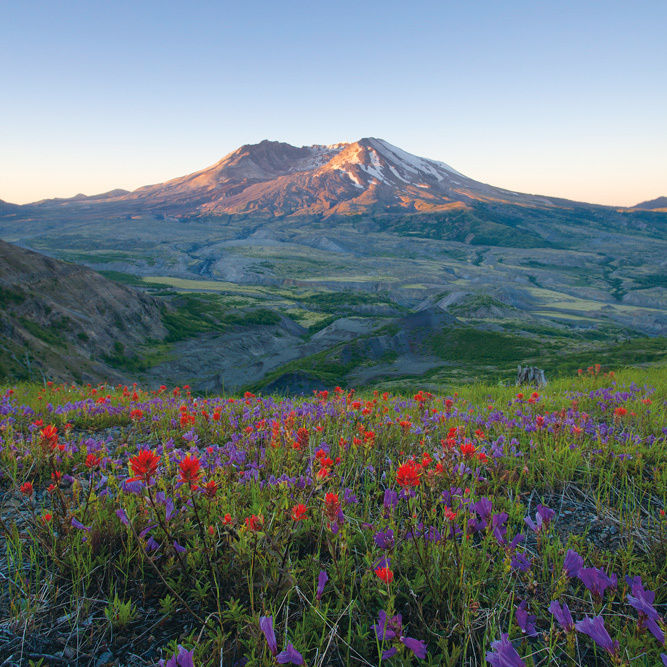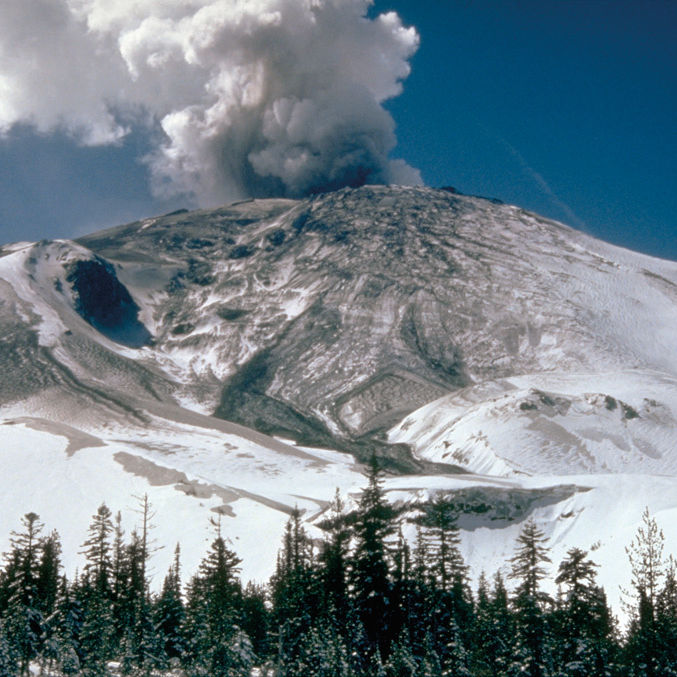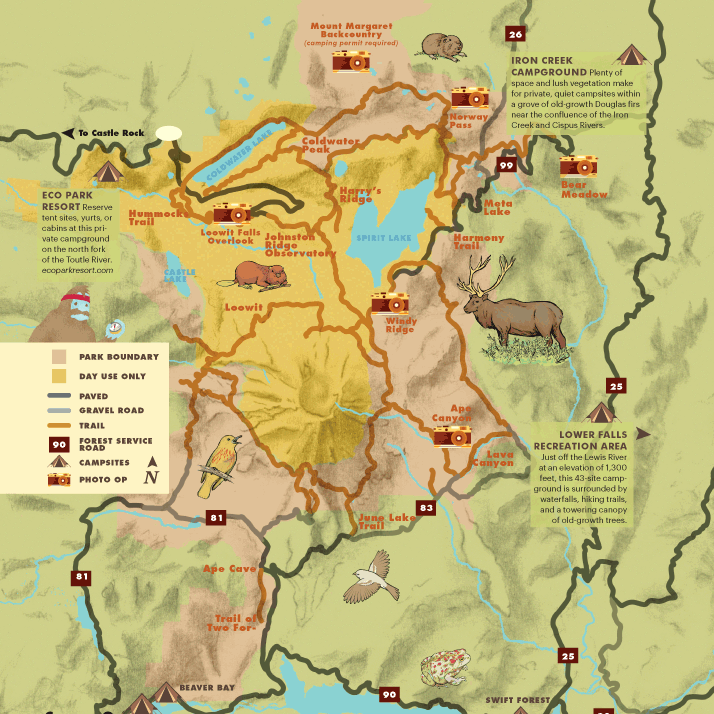Pro Tips for Photographing Mount St. Helens
Take Your Best Shot! Think you’ve got the quintessential Mount St. Helens photo? Post it on Instagram or Twitter, use the #MtStHelens hashtag, and tag @pomomagazine. We’ll choose our 10 favorites and put it to a public vote on Facebook. The winning photo will be printed in the August issue of the magazine.

Vary the Approach “Each side offers a different perspective of the mountain,” says photographer David Anderson, who shot the peak for Images of America’s Mount St. Helens book. Pick a trail that circles the mountain for a range of views—the 28-mile Loowit Trail (see our guide to the top trails of St. Helens) offers a challenging path through the blast zone and around the peak.
Rise and Shoot Mornings bring clear air, crisp colors, and stunning reflections. Anderson suggests an early-morning stroll along the Norway Pass trail for a view across Spirit Lake before the wind comes up—providing a serene mirror image of the mountain in the water, plus one heckuva view into the crater.
Fear Not the Clouds There’s no need to hold out for a sunny forecast. Anderson aims to capture the mountain in all of its moods and seasons. “Clouds lend a mystique to the mountain, adding depth and texture,” he says. “It’s like she’s bashful.” Overcast days are ideal for picking up color in flowers and fall foliage—think of the layer of gray as a light diffuser.
Think Beyond the Peak Sure, the classic shots are great, but Mount Margaret Backcountry offers plenty of photo ops beyond the dome and crater. Anderson loves the Andes-like vistas and wildflower shots that await lenses in late July and early August. Try the mountain bike–friendly Ape Canyon trail to access fields painted with summer blooms.










